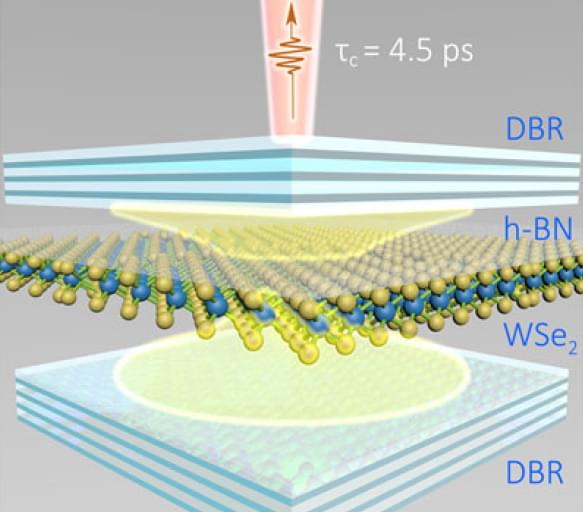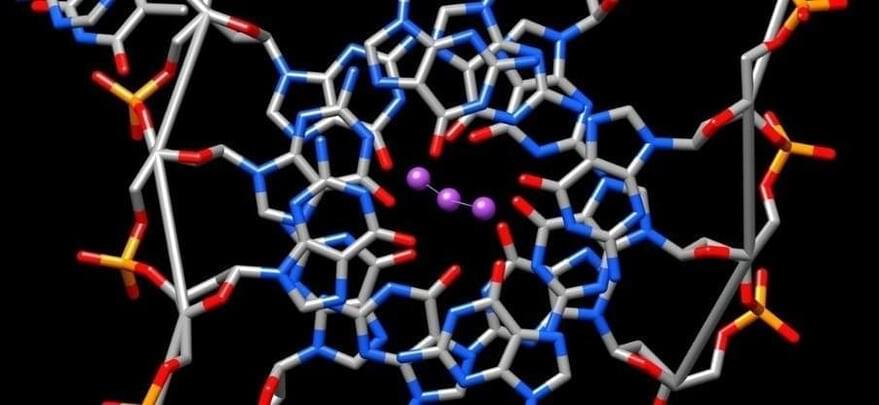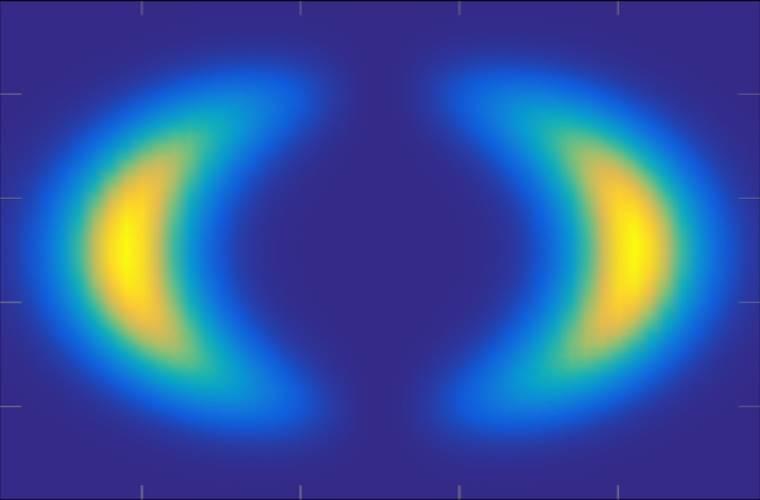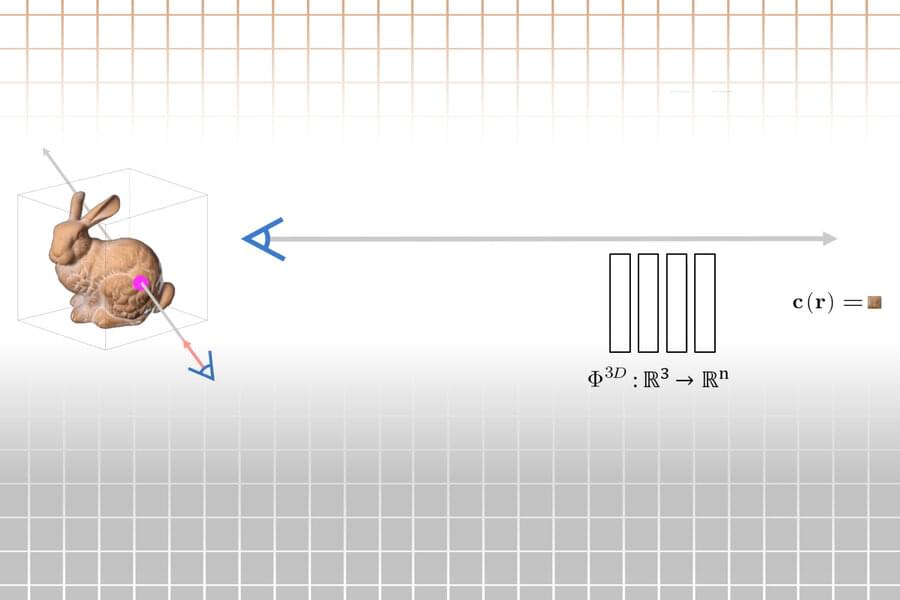Coherent light generation from ultrathin semiconductor crystals paves the way for creating novel nanolasers and valleytronic devices.



The double-helix structure has practically become synonymous with DNA, but it isn’t the only way long strands of genetic information squeeze themselves into a tight space.
When a double-strand of DNA doubles back on itself or attaches to another double-strand, it can actually create a quadruple-stranded knot, known as a G-quadruplex.
Scientists first discovered these ‘double-double-helixes’ in living human cells in 2013, and in the years since, these knots have been found in high concentrations in cancerous cells.

Warp drive pioneer Dr. Harold G “Sonny” White has reported the successful manifestation of an actual, real-world “Warp Bubble.”
Warp drive pioneer and former NASA warp drive specialist Dr. Harold G “Sonny” White has reported the successful manifestation of an actual, real-world “Warp Bubble.” And, according to White, this first of its kind breakthrough by his Limitless Space Institute (LSI) team sets a new starting point for those trying to manufacture a full-sized, warp-capable spacecraft.
“To be clear, our finding is not a warp bubble analog, it is a real, albeit humble and tiny, warp bubble,” White told The Debrief, quickly dispensing with the notion that this is anything other than the creation of an actual, real-world warp bubble. “Hence the significance.”
In 1994, Mexican Mathematician Miguel Alcubierre proposed the first mathematically valid solution to the warp drive. More specifically, he outlined a spacecraft propulsion system previously only envisioned in science fiction that can traverse the cosmos above the speed of light without violating currently accepted laws of physics.

Humans are pretty good at looking at a single two-dimensional image and understanding the full three-dimensional scene that it captures. Artificial intelligence agents are not.
Yet a machine that needs to interact with objects in the world—like a robot designed to harvest crops or assist with surgery—must be able to infer properties about a 3D scene from observations of the 2D images it’s trained on.
While scientists have had success using neural networks to infer representations of 3D scenes from images, these machine learning methods aren’t fast enough to make them feasible for many real-world applications.

Games have a long history of serving as a benchmark for progress in artificial intelligence. Recently, approaches using search and learning have shown strong performance across a set of perfect information games, and approaches using game-theoretic reasoning and learning have shown strong performance for specific imperfect information poker variants. We introduce, a general-purpose algorithm that unifies previous approaches, combining guided search, self-play… See more.
Games have a long history of serving as a benchmark for progress in.
Artificial intelligence. Recently, approaches using search and learning have.
Shown strong performance across a set of perfect information games, and.
approaches using game-theoretic reasoning and learning have shown strong.
performance for specific imperfect information poker variants. We introduce.
Player of Games, a general-purpose algorithm that unifies previous approaches.
Combining guided search, self-play learning, and game-theoretic reasoning.
Player of Games is the first algorithm to achieve strong empirical performance.
In large perfect and imperfect information games — an important step towards.

The idiom “actions speak louder than words” first appeared in print almost 300 years ago. A new study echoes this view, arguing that combining self-supervised and offline reinforcement learning (RL) could lead to a new class of algorithms that understand the world through actions and enable scalable representation learning.
Machine learning (ML) systems have achieved outstanding performance in domains ranging from computer vision to speech recognition and natural language processing, yet still struggle to match the flexibility and generality of human reasoning. This has led ML researchers to search for the “missing ingredient” that might boost these systems’ ability to understand, reason and generalize.
In the paper Understanding the World Through Action, UC Berkeley assistant professor in the department of electrical engineering and computer sciences Sergey Levine suggests that a general, principled, and powerful framework for utilizing unlabelled data could be derived from RL to enable ML systems leveraging large datasets to better understand the real world.
A huge asteroid the size of the Eiffel Tower is approaching our planet. The asteroid is named 4,660 Nereus and has been flagged ‘Potentially Hazardous’ by NASA. Nereus is 330 meters long and will break into Earth’s orbit on Saturday, December 11. The colossal asteroid is traveling at 23,700 km/h towards our planet.
On December 11, the asteroid will make its closest approach to Earth. It will come within 3.86 million km, about ten times the distance between Earth and the Moon. Although it sounds like an enormous gap on cosmic scales, it is actually a stone’s throw away.
How to watch comet Leonard: https://bit.ly/3xYv2Od
To set some benchmarks for their simulator, the researchers tried out three different design algorithms working in conjunction with a deep reinforcement learning algorithm that learned to control the robots through many rounds of trial and error.
The co-designed bots performed well on the simpler tasks, like walking or carrying things, but struggled with tougher challenges, like catching and lifting, suggesting there’s plenty of scope for advances in co-design algorithms. Nonetheless, the AI-designed bots outperformed ones design by humans on almost every task.
Intriguingly, many of the co-design bots took on similar shapes to real animals. One evolved to resemble a galloping horse, while another, set the task of climbing up a chimney, evolved arms and legs and clambered up somewhat like a monkey.

China has succeeded in literally changing the weather, a new study claims.
As the South China Morning Post reports, researchers say that during the Chinese Communist Party’s centennial celebration over the summer, weather authorities successfully modified the weather above Beijing to clear the sky and reduce pollution for the tens of thousands gathered for a commemorative ceremony in Tiananmen Square.
They did so using cloud seeding technology, a long-studied but controversial process that involves shooting silver iodide particles into the clouds, with the idea of attracting water droplets to modify the weather.

Neoen reveals plans for another big battery in South Australia which could be even bigger than the Victorian Big Battery opened on Wednesday.
French renewable energy and battery storage developer Neoen, fresh from the formal opening of the Victorian Big Battery – the biggest in Australia to date – has revealed plans for a potentially even bigger battery in South Australia.
Neoen is due to hold a community open day on Thursday for the Blyth battery, which will be sized up to 300MW and 800MWh, trumping the 300MW/450MWh capacity of the newly opened VBB near Geelong.
The Blyth battery will be located west of the town of Blyth, north of Adelaide, and alongside the existing Blyth West sub station, which have now become prime sites for aspiring battery storage developers.